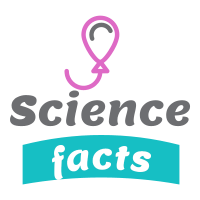Telescope
A telescope is an optical instrument that makes distant objects appear magnified by using an arrangement of lenses or curved mirrors and lenses, or various devices used to observe distant objects by their emission, absorption, or reflection of electromagnetic radiation.The first known practical telescopes were refracting telescopes invented in the Netherlands at the beginning of the 17th century, by using glass lenses. They were used for both terrestrial applications and astronomy.
The reflecting telescope, which uses mirrors to collect and focus light, was invented within a few decades of the first refracting telescope. In the 20th century, many new types of telescopes were invented, including radio telescopes in the 1930's and infrared telescopes in the 1960's. The word telescope now refers to a wide range of instruments capable of detecting different regions of the electromagnetic spectrum, and in some cases other types of detectors.
Types of telescope
Telescopes may be classified by the wavelengths of light they detect:
- Refracting telescope
- Radio telescope
Captures invisible radio waves given out by stars and the other objects in space.
A telescope is a light bucket. It collects light from the objects in space using either a lens or, more usually, a mirror. A main mirror reflects the light to a smaller one, which brings the light to a focus where an image of the object is formed.
Tell me more: inside an observatory
Prime focus: The astronomer originally sat here but today the view is recorded on to a computer.
Mount: Horseshoe-shaped mount supports telescope and turns it to point to a particular part of the sky.
Dome: The aluminium and steel dome rotates and opens so the telescope can look at different parts of the sky.
Base: Telescope is mounted on a crushed granite base in case of an earthquake.
Torch light: In this time-lapse image, the light is somebody walking around with a torch.
WEIRD OR WHAT?
A batch of radio telescopes known as the Alien Telescope Array listen out for signs of alien life. Together they will survey a million stars of radio singals generated by extraterrestrial intelligence.
What about me?
With naked eye you can just about make out something 130 km (81 miles) across on the moon's surface. The best Earth-based telescope can detect objects 1km (0.6 miles) across.
The largest single radio telescope is the 305-m (1,000 ft) dish at Arecibo, Puerto Rico. Built in a hollow in the island's hills, it faces different parts of the sky as the Earth turns.
Some telescopes work together to produce a more detailed image. The very large Array in New Mexico, USA, consists of 27 radio dishes, each 25 m (82 ft) across.
Some telescopes work together to produce a more detailed image. The very large Array in New Mexico, USA, consists of 27 radio dishes, each 25 m (82 ft) across.
- The Hubble Space Telescope was launched into space on 24 April 1990, costing US$1.5 billion.
- The 13.2-m-(43.5-ft-) long telescope orbits Earth every 97 minutes at an altitude of 569 km (353 miles), travelling at 8 km/sec (5 miles/sec).
- Its main mirror collects light, which is directed to cameras and instruments. The data they record is sent to Earth about twice a day.
- Hubble's replacement, the James Webb Space Telescope, will launch in 2013. It will be located 1.5 million km (930,000 miles) from Earth.

Beyond Vision
Stars don't just emit light but give off energy in a range of wavelength. Different types of telescope detect different types of energy. which reveal a whole range of activity in the Universe.
- Gamma ray image
- X-ray image
- ultraviolet rays
- visible light
- infrared light
- radio wave image
Observatories
01. The best observatory sites are high altitude desert regions close to the Equator.
02. They are usually about 80 km (50 miles) from a small town-near enough for supplis, but far enough away from light pollution.
03. They are in mountain locations, so clouds won't obscure the view.
04. Telescopes are placed high on the observatory building so they are not affected by the Earth's heat.
Blasts from the past
1608
Flemish spectacle maker Hans Lippershey applies for a patent for his newly invented telescopes.
1609
Italian scientist Galileo Galilei makes a telescopes out of a couple of spectacle lenses.
1668
English scientist Isaac Newton invents a reflecting telescope that uses two mirrors instead of lenses.
1838
German astronomer Friedrich Bessel uses a telescope to measure the distance to the star 61 Cygni-the first star distance measured after the Sun.
1887
Lick Observatory, Mount Hamilton, California, becomes the first permanent mountain top observatory.
1919
The 2.5-m (8-ft) Hooker Telescope on Mount Wilson, California, shows that most nebulae are distinct galaxies, and that the Universe is expanding.
1962
Ariel 1 is launched. It is the first telescope put into orbit around Earth.
Thankyou Guyzzz how'z our Blog.Tell us in a comment and if you have any question related to our blog so ask me guyzz and subscribe our blog for more info.



















.jpg)


